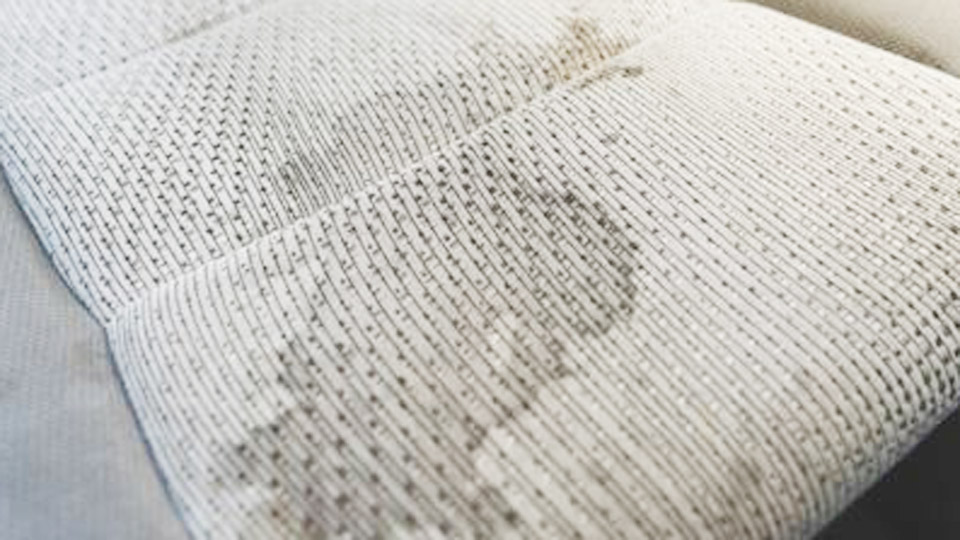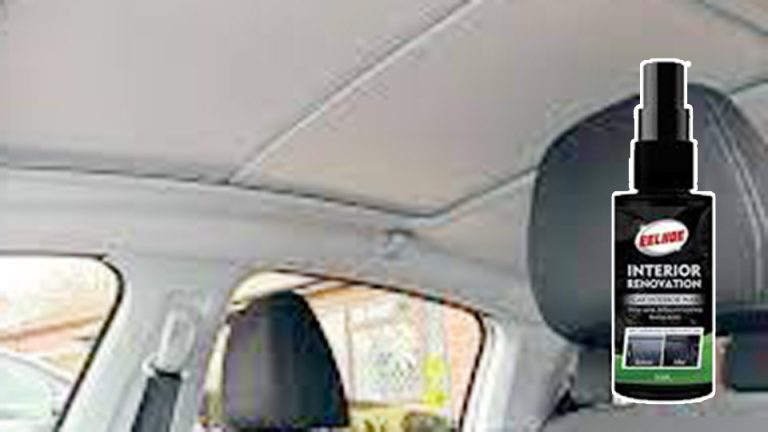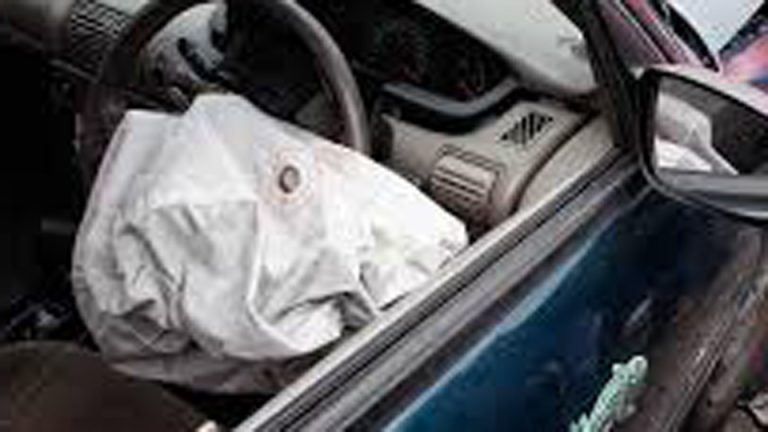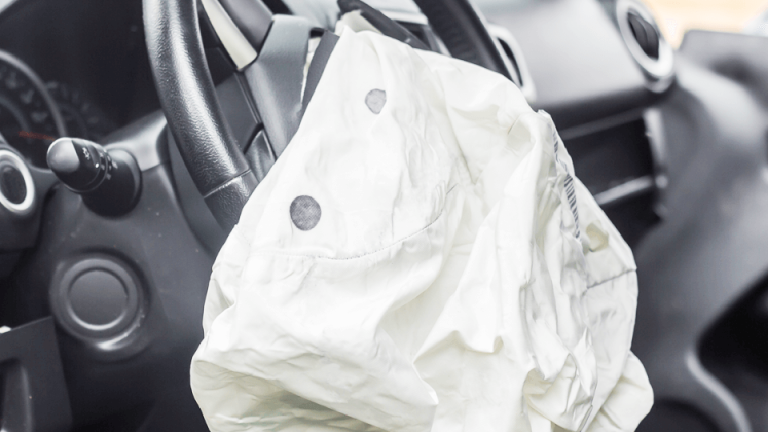You’re hopping into your car—maybe a trusty Honda Civic like mine or a rugged Jeep Wrangler—and you notice those pesky water stains on your cloth car seats. Maybe it was a spilled water bottle, a rainy day with wet clothes, or a kid’s juice cup gone rogue. I’ve been staring at those ugly marks on my Civic’s seats, wondering how to get them clean without a hassle.
I’ve tackled water stains more times than I can count. So, how do you remove water stains from cloth car seats? It’s not as tough as it looks, and with the right approach, you can make those seats look brand new.
I’ll walk you through my tried-and-true methods, share real-world stories from my garage, and give you practical tips to keep your seats spotless. Whether you’re new to car care or a gearhead who loves a pristine interior, I’ve got you covered.

Image by freeway
Why Water Stains Happen on Cloth Car Seats
Water stains on cloth car seats aren’t just water drying on fabric—they’re caused by minerals, dirt, or oils in the water that leave a residue as it evaporates. I learned this when my Civic’s seats got stained after I left a wet umbrella on them.
Tap water, rainwater, or even sweat can carry tiny particles that cling to the fabric, creating those annoying marks. Cloth seats are like sponges—they soak up liquid fast, and if it’s not pure water, you get stains. Understanding this helps you tackle the problem effectively, whether it’s a small spot or a big blotch.
Assessing the Water Stain Damage
Before you start cleaning, take a close look at the stains. Are they fresh or old? Small or widespread? Light or dark? I check my seats in good light—daylight’s best—to see the extent of the damage. In my Wrangler, I once found faint water stains from a leaky water bottle that were easier to clean than the dark, crusty marks on my F-150 from a muddy raincoat.
Fresh stains are simpler to remove, while older ones might need extra effort. Also, check your seat fabric—most cloth seats are polyester or nylon blends, which respond well to cleaning, but delicate fabrics might need gentler methods. Knowing the stain’s type and fabric helps you choose the right approach.
Tools and Supplies You’ll Need
You don’t need fancy gear to clean water stains, but having the right tools makes it easier. Here’s what I keep in my garage for the job:
- Clean microfiber cloths: Soft and absorbent, great for wiping and drying.
- Soft-bristled brush: For scrubbing without damaging fabric.
- Spray bottle: To apply cleaning solutions evenly.
- Bucket: For mixing solutions or soaking cloths.
- White vinegar: A natural cleaner for breaking down stains.
- Mild dish soap: Gentle but effective for lifting dirt.
- Baking soda: Great for odors and tough stains.
- Upholstery cleaner: A commercial option for stubborn marks.
- Vacuum with upholstery attachment: To remove loose dirt.
- Distilled water: Prevents new mineral stains.
- Towel or fan: For drying seats faster.
I learned to use distilled water after tap water left new stains on my Civic’s seats—tap water’s minerals can make things worse!
Step-by-Step Guide to Removing Water Stains
Here’s how I remove water stains from cloth car seats, based on years of trial and error:
Step 1: Vacuum the Seats
Start by vacuuming the seats to remove loose dirt, dust, or debris. I use my shop vac with an upholstery attachment on my Civic to suck up crumbs and grit. This prevents dirt from spreading when you add liquid.
Pay attention to seams and crevices where dirt hides. I once skipped this step on my F-150, and the stain spread into a muddy mess when I started cleaning.
Step 2: Test Your Cleaner
Before applying any cleaner, test it on a small, hidden spot—like under the seat—to ensure it doesn’t discolor the fabric. I did this with my Wrangler’s seats when using a new upholstery cleaner, and it saved me from a potential disaster. Wait a few minutes to check for color changes or damage.
Step 3: Try the Vinegar and Water Method
For light stains, mix equal parts white vinegar and distilled water in a spray bottle. I used this on my Civic’s seats after a water bottle spill. Lightly mist the stained area—don’t soak it—and let it sit for 5-10 minutes to break down the minerals.
Blot with a microfiber cloth, working from the outside in to avoid spreading the stain. I press gently to lift the stain, and it usually fades after a couple of rounds.
Step 4: Use Dish Soap for Stubborn Stains
For darker or older stains, mix a teaspoon of mild dish soap with a cup of distilled water. I used this on my F-150’s seats for a crusty raincoat stain. Dip a soft-bristled brush in the solution and gently scrub the stain in circular motions.
Don’t scrub too hard—you don’t want to fray the fabric. Blot with a clean microfiber cloth to lift the stain. I had to repeat this twice on my F-150, but it worked like a charm.
Step 5: Tackle Odors with Baking Soda
If the stains have a musty smell, sprinkle baking soda over the area after cleaning. I did this on my Wrangler’s seats after a wet dog left a funky odor. Let it sit for 15-20 minutes, then vacuum it up. Baking soda absorbs odors and can help lift lingering stains. It left my Wrangler smelling fresh and looking clean.
Step 6: Use Upholstery Cleaner for Tough Cases
For really stubborn stains, a commercial upholstery cleaner can save the day. I used one on my Civic’s seats for a deep-set water stain from a spilled sports drink. Follow the product’s instructions—usually, spray it on, let it sit, scrub lightly, and blot dry. I found that a foam-based cleaner worked better than a liquid one, as it didn’t soak the seat too much.
Step 7: Rinse with Distilled Water
After cleaning, lightly mist the area with distilled water to remove any cleaner residue. I learned this after soap left a sticky spot on my F-150’s seats. Blot with a clean microfiber cloth to absorb the water. Use distilled water to avoid new mineral stains—tap water was my mistake early on.
Step 8: Dry the Seats Thoroughly
Drying is key to prevent new stains or mold. Blot the seats with a dry towel, then let them air dry with windows open or a fan running.
I used a fan on my Civic’s seats to speed things up in humid weather. Avoid driving until the seats are fully dry—wet seats can pick up new dirt or get musty. My Wrangler’s seats took a day to dry in cool weather, but they looked spotless afterward.
Common Mistakes to Avoid
I’ve made plenty of blunders cleaning seats. Here’s what not to do:
Using Too Much Liquid: Over-wetting seats can lead to mold or new stains. I soaked my F-150’s seats once, and drying took forever.
Using Tap Water: Its minerals can leave new stains. I switched to distilled water after learning this with my Civic.
Scrubbing Too Hard: Aggressive scrubbing can fray fabric. I was gentle with my Wrangler to avoid damage.
Skipping the Test Spot: Always test cleaners first. I nearly ruined a seat in my CR-V by skipping this step.
Cleaning Solutions Comparison
Here’s a table of cleaning methods I’ve used, with pros, cons, and costs:
| Method | Pros | Cons | Cost |
|---|---|---|---|
| Vinegar + Water | Cheap, natural, effective for light stains | May need multiple applications | $1-$2 (vinegar) |
| Dish Soap + Water | Great for tough stains, gentle on fabric | Can leave residue if not rinsed | $1-$3 (soap) |
| Baking Soda | Absorbs odors, lifts stains | Messy, needs vacuuming | $1-$2 |
| Upholstery Cleaner | Strong for stubborn stains, easy to use | More expensive, may require rinsing | $5-$15 |
I lean toward vinegar for light stains and upholstery cleaner for tough ones, depending on the car.
My Real-World Experience Cleaning Water Stains
Let me share a couple of stories. Last summer, my Honda Civic’s passenger seat got a water stain from a leaky water bottle my kid left behind. I used the vinegar and water method—sprayed it lightly, let it sit for 10 minutes, and blotted with a microfiber cloth.
After two rounds, the stain was gone, and the seat looked fresh. I dried it with a fan to avoid mold, and it’s been spotless since.
On my Jeep Wrangler, a wet dog left a musty water stain on the back seat. I vacuumed first, then used dish soap and water with a soft brush. It took some scrubbing, but the stain lifted. I sprinkled baking soda to kill the smell, vacuumed it up, and rinsed with distilled water.
The seat dried overnight with open windows, and it looked and smelled like new. These experiences taught me that patience and the right method make all the difference.
Different Fabrics and Cleaning Challenges
Cloth car seats vary—some are tougher than others. Here’s what I’ve learned:
- Polyester/Nylon Blends: Common in cars like my Civic. They’re durable and respond well to vinegar or soap.
- Suede-Like Fabrics: Found in some luxury cars. I used a gentle upholstery cleaner on my friend’s Audi to avoid damage.
- Heavily Textured Fabrics: Like in my Wrangler. These trap dirt, so vacuum thoroughly before cleaning.
Test your cleaner on a hidden spot, especially with delicate fabrics. I always do this to avoid surprises.
Preventing Water Stains in the Future
Once you’ve cleaned those stains, you want to keep them away. Here’s how I prevent water stains:
- Use Seat Covers: Waterproof covers protect my Wrangler’s seats from spills.
- Keep a Towel Handy: I stow one in my Civic for quick spill cleanups.
- Avoid Wet Items: Don’t leave wet umbrellas or clothes on seats, like I did in my F-150.
- Use Distilled Water: If you spill water, use distilled to clean it immediately.
These habits have kept my seats cleaner for longer.
When to Call a Professional
Sometimes, stains are too tough for DIY. I took my F-150 to a detailer when a coffee-mixed water stain wouldn’t budge, even with upholstery cleaner. Professionals have steam cleaners and stronger solutions, costing $50-$150 depending on the job.
If you’ve tried multiple methods or have delicate fabrics, a pro can save time and prevent damage. My detailer got my F-150’s seats looking like new for $80.
Cost Breakdown for DIY Cleaning
Here’s what I’ve spent on cleaning supplies:
| Item | Estimated Cost | Notes |
|---|---|---|
| Microfiber Cloths (Pack of 6) | $5-$10 | Reusable, washable |
| Soft-Bristled Brush | $3-$8 | Durable for multiple uses |
| White Vinegar | $1-$3 | 1 bottle lasts ages |
| Mild Dish Soap | $1-$3 | Small amount needed |
| Baking Soda | $1-$2 | Multi-purpose cleaner |
| Upholstery Cleaner | $5-$15 | Good for tough stains |
| Distilled Water | $1-$2 | Prevents mineral stains |
| Shop Vac | $30-$100 | Optional, one-time purchase |
I spent about $25 on supplies for my Civic and Wrangler, and they’ve lasted for multiple cleanings.
Cleaning Different Vehicles
Here’s how cleaning water stains worked in my vehicles:
| Vehicle | Stain Type | Method Used | Outcome |
|---|---|---|---|
| Honda Civic (2015) | Water bottle spill | Vinegar + Water | Stain gone, seat like new |
| Jeep Wrangler (2012) | Wet dog stain | Dish soap + Baking soda | Stain and odor removed |
| Ford F-150 (2017) | Raincoat stain | Upholstery cleaner | Needed pro help for coffee mix |
| Chevy Equinox (2014) | Rainwater | Vinegar + Soap | Faint stain remained, improved |
My Civic and Wrangler were easy fixes, but the F-150 needed extra effort.
What Not to Do When Cleaning Water Stains
Here’s what I’ve learned to avoid:
- Don’t Over-Wet the Seat: Too much liquid can cause mold. I learned this with my F-150.
- Don’t Use Harsh Chemicals: Bleach or ammonia can ruin fabric. I stuck to gentle cleaners.
- Don’t Skip Drying: Wet seats attract dirt and mold. I use a fan for my Civic.
- Don’t Ignore Old Stains: They’re harder to remove. I tackled my Wrangler’s stains early.
Practical Tips for Removing Water Stains
Here are my go-to tips for cleaning cloth car seats:
- Start with Vacuuming: Removes dirt that can spread during cleaning.
- Use Distilled Water: Prevents new mineral stains. I keep a jug in my garage.
- Work in Small Sections: Focus on one stain at a time for better results.
- Dry Thoroughly: Use a fan or open windows to speed drying and prevent mold.
These tricks have saved me time and effort on all my cars.
Keep Your Seats Spotless
So, how do you remove water stains from cloth car seats? From my experience with my Civic, Wrangler, and more, it’s all about using the right tools—vinegar, dish soap, or upholstery cleaner—and following a careful process: vacuum, test, clean, rinse, and dry. Whether it’s a small spill or a stubborn mark, these methods can make your seats look fresh again.
Be patient, use distilled water, and don’t skip drying to avoid new problems. With a little effort, you can keep your car’s interior looking sharp and inviting.
Grab your supplies, tackle those stains, and enjoy a clean, comfy ride. Here’s to spotless seats and happy driving!
Frequently Asked Questions
How do I remove water stains from cloth car seats?
Vacuum the seat, use a vinegar-and-water mix or dish soap solution, scrub gently, rinse with distilled water, and dry thoroughly.
What causes water stains on cloth car seats?
Minerals, dirt, or oils in water leave residue as it dries. I got stains on my Civic from a wet umbrella.
Can I use tap water to clean water stains?
Avoid tap water—it can leave new mineral stains. I use distilled water for my RAV4 to prevent this.
How long does it take to remove water stains?
Light stains take 20-30 minutes per seat; tough ones may need an hour. My Wrangler’s seats took a day to dry.
When should I call a professional for water stains?
If stains persist after trying vinegar, soap, or upholstery cleaner, a detailer can help. My F-150 needed a pro for a tough stain.




